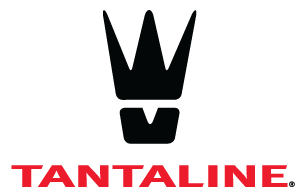Description
When systems are exposed to and are in contact with aggressive chemicals that are highly corrosive, standard fittings can become severely corroded putting the entire assembly at higher risk of early failure, resulting in expensive equipment downtime. Tantalum surface layer applied by the proprietary Tantaline® treatment process provides superior corrosion resistance, strength, and leak tightness for extended service life in hot acidic environment. Tantaline® treatment for corrosion resistance is a cost-effective substitute for exotic alloys to achieve long term corrosion resistance and reliable sealing for the various fitting types.
Benefits
Tantaline ® treatment uses high-end Chemical Vapor Deposition techniques to deposit a uniform, diffusion bonded layer of corrosion resistant tantalum onto very intricate shapes and smaller sizes of fittings while maintaining critical tolerances. Tantaline® treated fittings offer better corrosion resistance than austenitic stainless steels which cannot fight stress corrosion, chloride attack, and especially sulfide cracking. The metallurgical properties of the tantalum surface combined with the uniform and conformal CVD layer results in superior acid resistant fittings that have excellent compatibility in most aggressive acids and can be offered with economical pricing and short lead-times.
Availability
A wide range of styles and configurations are suitable for Tantaline® treatment.
Types:
- Tube Fittings
- Pipe Fittings
- Flanged Fittings
- Clamped Fittings
- Vacuum Fittings
Use
| Chemical Processing | Hot acids, wet and dry chlorine, sulfur compounds, sour gases containing hydrogen sulfide (H2S) compounds |
|
| Oil & Gas | Acid gases (CO2, H2S, SO2), ammonia (NH3), hydrogen cyanide (HCN), alkylation, and amine derivatives | |
| Pharmaceutical | Oxidizing agents including hydrogen peroxide (H2O2), bromine (Br), chlorine (Cl), nitration, and various cleaning chemistries | |
| Semiconductor | Strong HCl etchants, corrosive Nital (alcohol + nitric acid), byproducts of Silicon deposition process | |
| Mining | Strong acid leaching, pressure oxidation, heap leaching | |
| Marine | Corrosive sea water with chlorides, dissolved oxygen (O2), microbial corrosion |
Key Technical Information
Hastelloy®* Inconel®**, Zirconium, Titanium, and Stainless Steel valve components are susceptible to Stress Corrosion Cracking (SCC) and pitting especially in hot acids like HCl. Tantaline® treatment offers the following beneficial characteristics:
- Chemically resistant to SCC and pitting in many aggressive media and environments.
- Tantalum layer remains passivated and inert to corrosion under high temperature (>200⁰ C) acidic conditions including concentrated hydrochloric acid (HCl) and
sulfuric acid (H2SO4).*** - Superior corrosion resistance against wet, dry chlorine atmospheres, and other chlorinated environments.
**Inconel® is a trademark of Special Metals Wiggin Limited.
***FJ, H. (n.d.). Properties of Tantalum for Applications in the Chemical Process Industry


